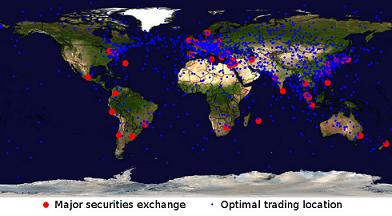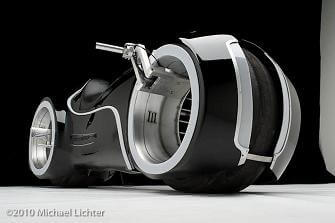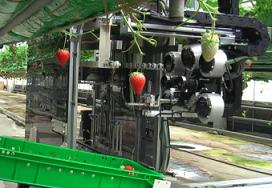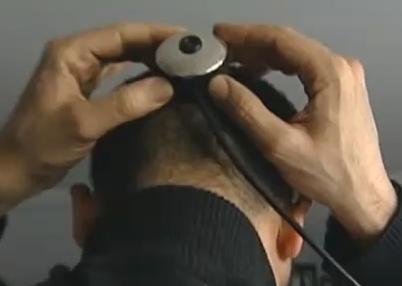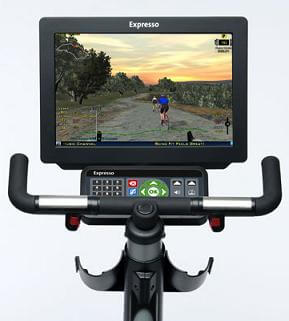Well the Newspaper Extinction Timeline we launched a couple of weeks ago has certainly made an impression. Given the 50,000 views we've had on my blog alone, plus the extensive uptake by mainstream media around the world (a partial list at the bottom of this post) it's a pretty safe estimate that it has been seen over one million times so far. Some of our other visuals such as our Web 2.0 Framework and Future of Media Strategic Framework have had well over 500,000 views, but the Newspaper Extinction Timeline has quickly transcended these.

Click on image to download full framework
The framework has attracted both brickbats and bouquets. However it has been significantly misunderstood, so it's worth going into some further explanations and clarifications.
Why so specific?
I expect the Newspaper Extinction Timeline to be wrong in the detail. While we think it's likely to be mainly right I would be amazed if we get much precisely right. That is because the future is inherently unpredictable. We're not trying to pretend that it isn't, and that's why for long-term strategy projects we favor scenario planning as a tool to identify and acknowledge the full scope of uncertainty. However as I noted earlier, precise forecasts can help people to engage with ideas, and hopefully move them to action. The key intentions of the timeline were to bring to life the shift from news-on-paper and the diversity of global media markets.
What does 'insignificant' mean?
A number have asked what me to define 'insignificant', presumably so they can in 2017 and subsequent years check and see whether I was right or wrong. I don't think that's very useful - in a decade or two people will be able to judge either that I was broadly right, or broadly wrong. If I was slightly wrong then that would still be pretty good, and worth alerting. However, so I can be held to account, I will make this specific: By insignificant I mean that non-customized mass-dsitributed news-on-paper will account for less than 2% of media revenues. This is not a great definition for a number of reasons, but is an equivalent level to when most media and marketing people thought online was an insignificant medium.
What are the primary drivers of this shift?
Many of the commentators on the timeline seem to have missed the second page of the framework, which provides some of the factors that were taken into account in creating the timeline.

Click on image to download full framework
I will expand more on the details of the analysis behind the timeline later, however the two biggest reasons for the global decline of news-on-paper are:
- Shift to digital interfaces. The shift from paper to digital devices such as tablets, and more importantly high-quality digital paper, as interfaces to news. Tablets will be given away for free (with strings attached) very soon, and digital paper will supplant paper by the end of the decade in many developed countries.
- Changing economics of newspapers. The economics of newspapers are on the verge of collapse in many countries. In developed countries newspapers have largely lost classifieds revenue, are experiencing rapid decrease in display advertising, and are losing readers apace. There are substantial fixed costs in newspaper production, with in most the majority of the costs production and distribution. With rapidly declining revenue, and in many countries significant debt to service in addition to high fixed and variable costs, printing newspapers will not be economically viable. While there may be many people who still want to buy and read newspapers, those newspapers may not be available. The fact of demand does not mean there will be supply of newspapers in their current form.
Where's the data?
A number of commentators have said that these predictions are not supported by data. I find that a strange comment, since we have no data on the future. We do have data on the present, and below I have listed a few of the sources we used for our analysis. Some seem to think that trend extrapolation can be useful, but that is dumb - the economic dynamics of newspapers go through discontinuities as readers decrease.
Selected data sources:
World Association of Newspapers World Press Trends 2010 report: Data for every country on newspaper circulation, advertising revenue,
Newspaper Association of America and other country newspaper industry associations: The best data is from the US market though there is some other good country data.
International Telecommunication Union (ITU) Statistics: Data for every country on internet and mobile usage
CIA World Factbook (and similar sources): Population, urbanization, economy, demographics etc.
OECD State of Newspapers: Analysis and data on the current state and future of newspapers in OECD countries.
Press freedom index: Media openness
Consumer behavior: a wide variety of surveys and reports such as TNS Digital Life, Deloitte State of the Media Democracy, and the Global Web Index.
Will newspapers in the rest of world all die in 2040?
Many seem to be interpreting the diagam that the countries marked in the legend against 2040+ are predicted to become insignificant in the year 2040. Newspapers in these countries will reach the threshold in 2040 OR LATER. In some cases this will be past the end of this century.
What should we do about it?
That's exactly the right question, as Earl Wilkinson eloquently wrote in response to the timeline. The most important point of all is that this is about the extinction of news-on-paper, not journalists or the organizations that provide us with news. We are inexorably moving to a global media economy. As I wrote a few months ago, I believe overall media revenues will soar. The news organizations of today are better positioned than anyone else to take that opportunity. But extremely rapid and deft action is required for that.
In coming months we will be creating substantial detailed content on what news organizations need to do to take that opportunity.
Below is a partial list of outlets that have published or commented on the Newspaper Extinction Timeline. Other than a few exceptions, I have only included mainstream media and not the many individual blog mentions.
233Grados: Un mundo sin prensa en papel, a mediados de siglo
ABC Espana: La muerte de los periodicos
The Australian: Deadline for newspapers as digital publications rise
The Bangkok Bugle: NEWSPAPERS IN THAILAND TO DIE IN 2037
Bilgi Cagi: Ölemedi gitti şu gazeteler!
Brand Republic: Digital to kill US and UK newspapers before 2020
The Business Times: Rising to the media challenge
BuzzFeed: Newspaper Extinction Timeline
Central Valley Business Times: AUDIO INTERVIEW: Futurist names the years when the newspapers die
Chaskor: Апокалипсис уже очень скоро
Comment: Hét éve van hátra az amerikai printlapoknak
Cyberpresse.ca: Les journaux canadiens mourront en…2020
Dagensmedia: Sverige utan dagstidningar 2025
De Nieuwe Reporter: 2027: RIP Nederlandse kranten (of niet?)
De Repente: Já marcaram a data do fim da publicação impressa no Brasil
De Standaard: Krant verdwijnt in België in 2026
Empleare: ¿Porqué el periodismo impreso desaparecería en unos años?
Estado de Minas: Fim dos jornais: uma previsão
Express: Belgische kranten verdwijnen in 2026
Eyjan: Dagblöð á undanhaldi – Spáð að útgáfa leggist af árið 2018 á Íslandi
The Foreigner: Norwegian newspapers to die within ten years
Geenstijl: Officieel. Kranten uitgestorven in 2027
The Guardian (1): British newspapers to die in 2019
The Guardian (2): Wilkinson: accept that newspapers are dying, now do something positive
Gulf News: The Extinction Timeline
HD: 2025 trycks sista dagstidningen –??
Helagotland: Ungas datorvanor slår mig med häpnad
HWSW: 2032-re hal ki a magyar nyomtatott sajtó
INMA Norge: Papiravisens død tidfestes
Journalism.co.uk: Extinction timeline: UK newspapers given nine years to live
Journalisten: Sveriges sista dagstidning trycks 2025
Kampajne: Avisene borte i 2020
KataWeb: Quando diventeranno irrilevanti i giornali (in ITALIA)?
Levante: Por dentro y por fuera
Linfo: Le dernier journal français pourrait être imprimé en 2029
LR21: Periódicos de papel desaparecerán en 2040
Markedsforing: Aviserne uddør i 2023
Maxso Magazine: 2027, morte dei giornali cartacei in Italia
MBL: Áratugur eftir af blöðum?
Media Digest: British newspapers ‘extinct in 10 years’
MediaTel: The Independent i: I don't get it
MediaViiko: Mediafuturistin maakohtainen lista: Suomessa sanomalehti kuolee 2021
Media världen: Varför är svensk dagspress uträknad 2025?
Meedia: Warum Zeitungstod-Prognosen Blödsinn sind
MNO Magyar Nemzet: 2017-től fokozatosan eltűnik a nyomtatott sajtó
The Next Web: When will newspapers die out in your country? Check this infographic
Newsline: The Independent i: I don't get it
Nouvel Obs: Les journaux sont des dinosaures comme les autres
PCTuner: Fine del cartaceo: ora c’è anche una timeline
Perlentaucher: Feuilletons
Persoenlich: 2025 gibt es keine Zeitung mehr in der Schweiz
PortalMundos: La muerte de los periódicos llegará a partir de 2017
Print24: Gedruckte Zeitungen werden verschwinden
Radio Netherlands Press Review: Are newspapers a thing of the past?
Resume: Då dör papperstidningen
Sargasso: Uitsterven papieren kranten in kaart gebracht
Semnele Timpului: Un futurolog a prezis sfârșitul ziarelor în câțiva ani
Spiegel: Futurologie: Die rote Liste der aussterbenden Presse
Strategie: Zánik tlače pred rokom 2020?
SvD: Nu ligger vi nere för räkning – igen
Time: Futurist Predicts Extinction Timeline of World's Newspapers
Times of India: It's sunrise of print media in South Asia
Today: To build consensus out of the clamour ...
TO BHMA: ΠΙΣΩ ΑΠΟ ΤΗ ΒΙΤΡΙΝΑ
Trouw: Hoe lang heeft de krant nog?
tyinterty.cz: Grafika: Kdy v které zemi vymřou noviny
Una Fuente: MEDIOS I CREAN INFONOGRÁFICO PARA PREDECIR EN QUE AÑO DESAPARECERÁN LOS PERIÓDICOS IMPRESOS
Village Voice: Death of the Newspaper Vs. Birth of Second Ave Subway Line
Villamedia: Wereldkaart ‘uitsterven’ dagbladen
Welingelichte Kringen: Nederlandse kranten verdwijnen in 2027
Wired Italy: Nel 2027 scompariranno i giornali in Italia
Zigonet: La fin de la presse écrite annoncée pour 2029





